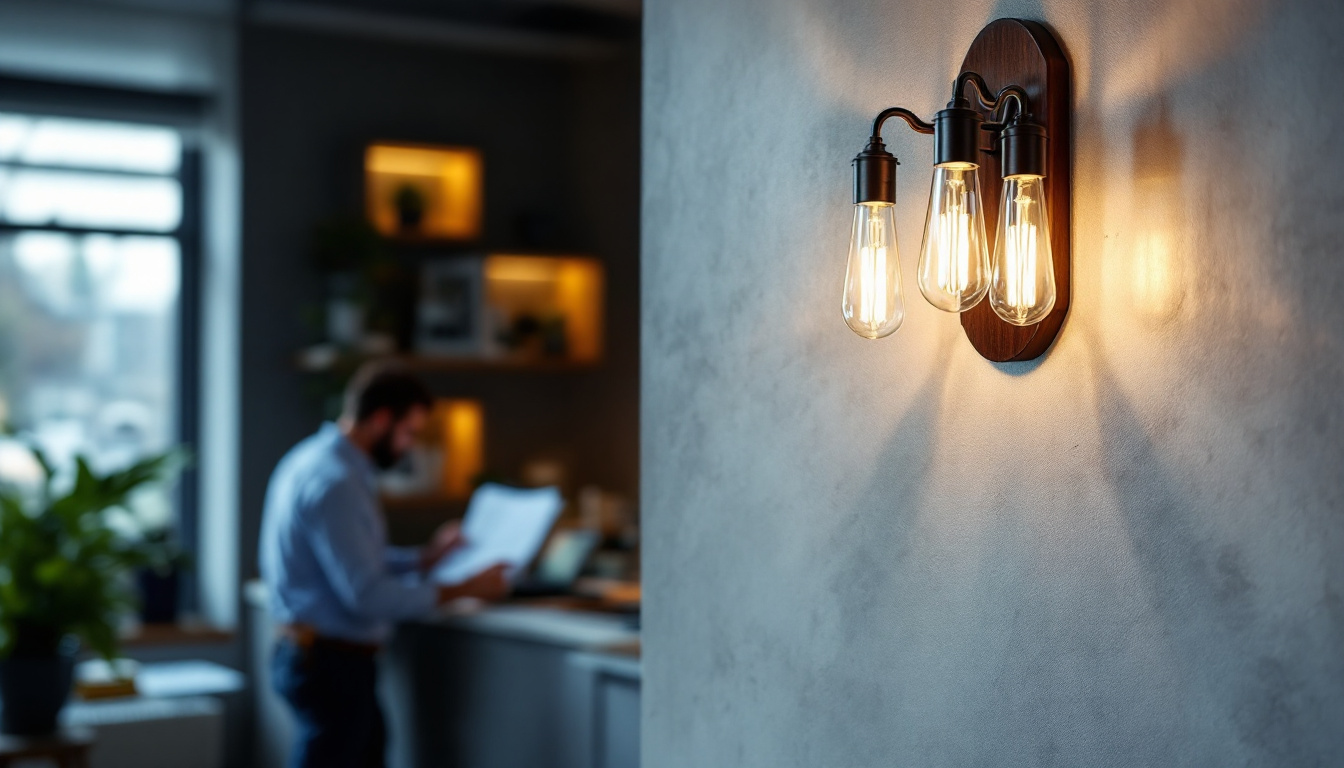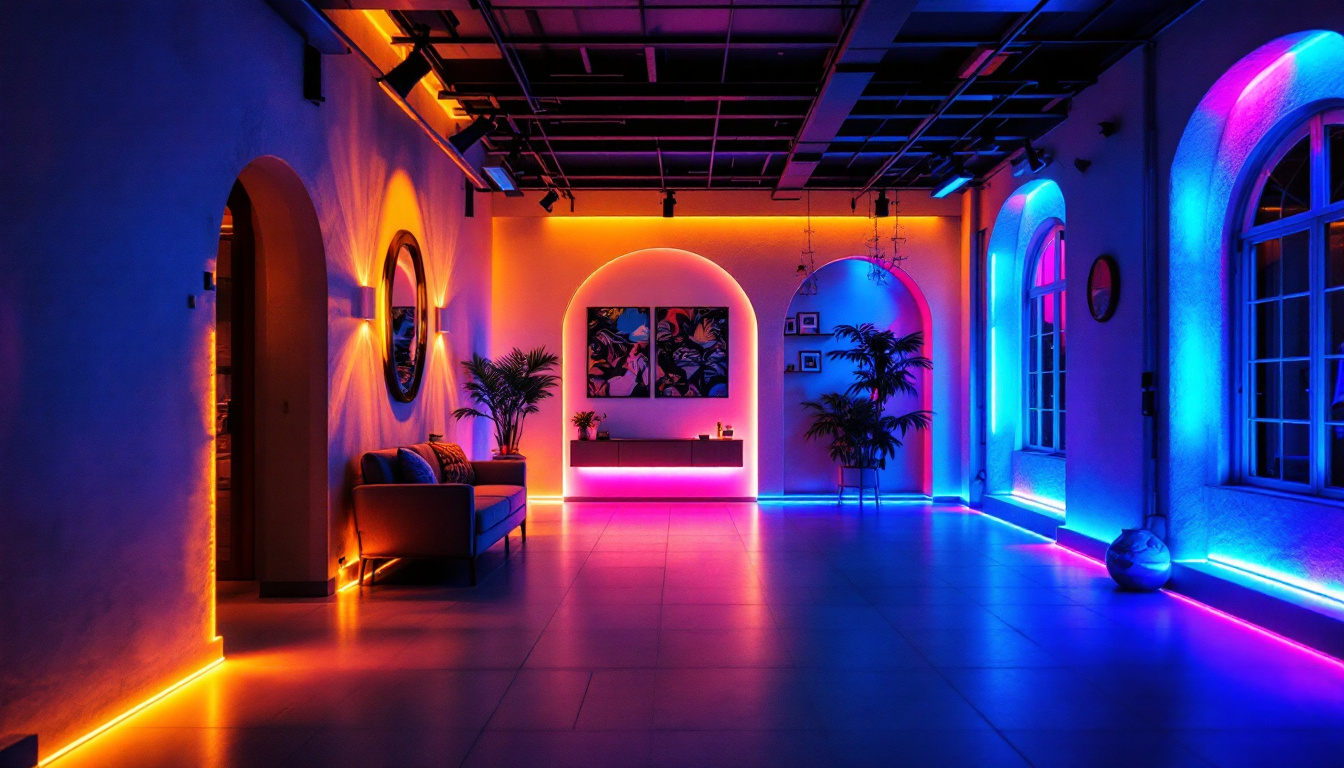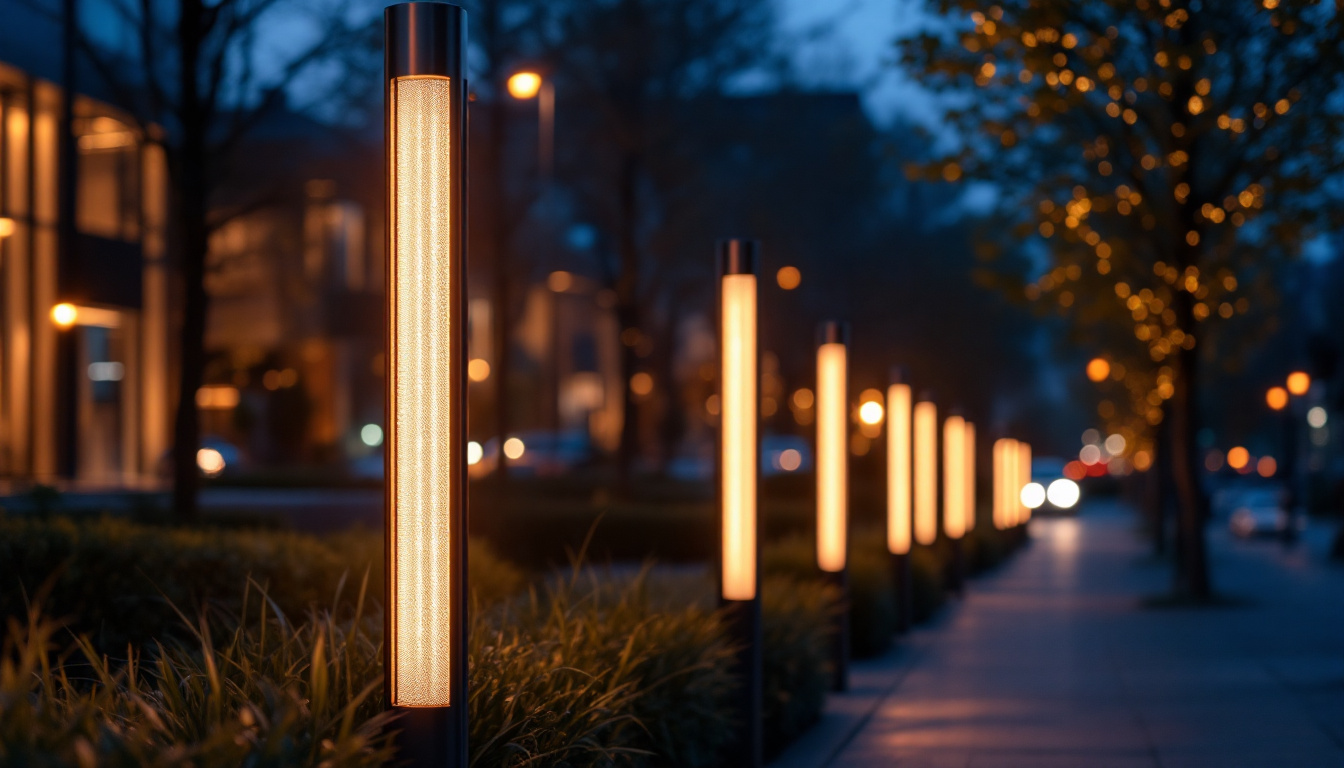
Lighting is a critical aspect of any construction or renovation project, and the choice of fixtures can significantly influence the overall aesthetic and functionality of a space. Among the various lighting options available, sconce fixtures stand out as versatile and stylish solutions that can enhance both residential and commercial environments. For lighting contractors, understanding the benefits and applications of sconce fixtures can be a game-changer when it comes to winning more bids. This article delves into the advantages of incorporating sconce fixtures into proposals and how they can elevate a contractor’s offerings.
Sconce fixtures are wall-mounted lighting solutions that provide both ambient and task lighting. They come in a variety of styles, sizes, and finishes, making them suitable for different design themes and settings. Unlike traditional ceiling-mounted fixtures, sconces can create a more intimate atmosphere by directing light along walls, enhancing architectural features, and providing focused illumination in specific areas. The versatility of sconces allows them to serve not just as functional lighting, but also as integral components of interior design, adding character and depth to any space.
There are several types of sconce fixtures available, each serving distinct purposes. Some common types include:
Sconce fixtures are incredibly versatile and can be used in a range of settings, from residential homes to commercial spaces. In residential settings, they can be placed in hallways, living rooms, and bedrooms to create a warm and inviting atmosphere. For instance, a pair of sconces flanking a mirror in an entryway can provide both illumination and a sense of balance. In commercial environments, sconces can be used to highlight branding elements or create a specific ambiance in restaurants, hotels, and retail spaces. The strategic placement of sconces can guide customers through a space, drawing attention to key areas such as product displays or seating arrangements.
Moreover, sconces can also play a crucial role in outdoor settings. Exterior sconces are designed to withstand the elements while providing safety and security around entryways, patios, and gardens. These fixtures not only illuminate pathways but also enhance the architectural features of a home’s exterior. With the rise of smart home technology, many modern sconces can now be integrated with smart lighting systems, allowing users to control brightness and color temperature from their smartphones, further expanding their functionality and appeal.
For lighting contractors, understanding the benefits of sconce fixtures can help in crafting compelling proposals that resonate with clients. Here are some key advantages:
Sconce fixtures add a layer of sophistication and elegance to any space. Their ability to blend seamlessly with various design styles—from modern to traditional—makes them a desirable choice for clients looking to elevate their interiors. By incorporating sconces into a lighting plan, contractors can demonstrate their commitment to aesthetics and attention to detail. The variety of finishes, colors, and designs available in sconce fixtures allows for customization that can reflect a homeowner’s personal style or the character of a commercial space. Whether opting for sleek metallics in a contemporary setting or ornate, vintage-inspired designs in a classic home, sconces can become focal points that enhance the overall ambiance.
In areas where floor space is limited, sconces provide an excellent solution. By mounting fixtures on walls, contractors can free up valuable floor space while still providing ample lighting. This is particularly beneficial in smaller rooms or areas with heavy foot traffic, where traditional lamps or overhead fixtures might be impractical. Additionally, sconces can be strategically placed to highlight architectural features, artwork, or other design elements, further maximizing the use of space. This versatility allows for creative lighting solutions that not only illuminate but also enhance the visual appeal of a room, making it feel more open and inviting.
Many modern sconce fixtures are designed to accommodate energy-efficient bulbs, such as LEDs. By promoting energy-efficient options, contractors can appeal to environmentally conscious clients and help them save on energy costs in the long run. Highlighting energy efficiency in proposals can also align with green building practices, making bids more attractive. Furthermore, the longevity of LED bulbs means less frequent replacements, reducing waste and maintenance costs for clients. This aspect of sustainability is increasingly important in today’s market, where consumers are more aware of their environmental impact and are actively seeking solutions that align with their values.
Sconce fixtures are not just limited to residential settings; they can be effectively utilized in a variety of environments, including commercial spaces, hospitality venues, and outdoor areas. In restaurants, for example, sconces can create a warm and inviting atmosphere, enhancing the dining experience while providing functional lighting. In outdoor settings, weather-resistant sconces can illuminate pathways, patios, and entryways, ensuring safety while adding to the aesthetic appeal. This versatility makes sconces a valuable addition to any lighting design, allowing contractors to cater to a diverse range of client needs and preferences.
Incorporating sconces into a lighting design allows for the creation of layered lighting effects, which can dramatically enhance the mood of a space. By combining sconces with other lighting sources, such as overhead fixtures and table lamps, contractors can achieve a balanced and dynamic lighting scheme. This approach not only improves the functionality of a space but also adds depth and interest, making it more visually appealing. Clients often appreciate the ability to adjust lighting levels for different occasions, whether it’s for entertaining guests or enjoying a quiet evening at home. The strategic placement of sconces can also help to reduce harsh shadows and create a more inviting atmosphere throughout the day and night.
To effectively leverage sconce fixtures in bids, contractors should focus on several key strategies that showcase their value to potential clients.
When presenting a lighting proposal, it is essential to emphasize the versatility of sconce fixtures. Providing a range of options in terms of styles, finishes, and functionalities can cater to diverse client preferences. Including visual aids, such as mood boards or 3D renderings, can help clients envision how sconces will enhance their space.
Contractors should clearly articulate the functional benefits of sconces in their proposals. This includes discussing how sconces can improve visibility in specific areas, create focal points, and complement other lighting sources. Providing case studies or examples of past projects where sconces were effectively utilized can strengthen the proposal’s credibility.
Clients are often concerned about budget constraints. By offering a cost-benefit analysis that outlines the long-term savings associated with energy-efficient sconces, contractors can make a compelling case for their inclusion. This analysis can include factors such as reduced energy bills, lower maintenance costs, and increased property value due to enhanced aesthetics.
While sconce fixtures offer numerous benefits, there are also challenges and considerations that lighting contractors must address when incorporating them into proposals.
The installation of sconce fixtures may require additional planning, especially in terms of electrical work and wall space. Contractors should be prepared to discuss the installation process with clients, including any potential challenges that may arise. Providing a clear timeline and outlining the steps involved can help alleviate client concerns.
It is crucial for contractors to be aware of local building codes and regulations regarding lighting installations. Ensuring that sconce fixtures comply with safety standards and guidelines is essential to avoid potential legal issues. Including information about compliance in proposals can demonstrate professionalism and reliability.
Many clients may not be familiar with the benefits and applications of sconce fixtures. Taking the time to educate clients about their options and how sconces can enhance their space can help build trust and rapport. Providing resources, such as brochures or links to informative articles, can empower clients to make informed decisions.
Real-world examples can illustrate the effectiveness of sconce fixtures in various projects. Here are a few case studies that highlight successful implementations:
In a recent residential renovation project, a contractor incorporated wall-mounted sconces in the living room to complement existing recessed lighting. The sconces provided a warm glow that enhanced the room’s ambiance, while also serving as decorative elements. The homeowner reported increased satisfaction with the overall aesthetic and functionality of the space.
A lighting contractor was tasked with transforming a dimly lit restaurant into a vibrant dining experience. By strategically placing sconces along the walls, the contractor was able to create a cozy yet lively atmosphere. The combination of sconces and other lighting sources not only improved visibility but also attracted more customers, leading to increased sales.
In an art gallery, sconces were used to highlight specific pieces of artwork on display. The adjustable sconces allowed for precise lighting control, ensuring that each piece was showcased effectively. The gallery owner noted that the enhanced lighting significantly improved the overall visitor experience and increased artwork sales.
As technology continues to evolve, so do lighting fixtures. The future of sconce lighting is likely to be influenced by several emerging trends:
Smart home technology is becoming increasingly popular, and sconce fixtures are no exception. The integration of smart lighting systems allows for remote control, dimming options, and customizable lighting scenes. Contractors who stay ahead of this trend can offer clients cutting-edge solutions that enhance convenience and energy efficiency.
With a growing emphasis on sustainability, manufacturers are exploring eco-friendly materials for sconce fixtures. Contractors should consider sourcing fixtures made from recycled or sustainably sourced materials, as this aligns with the values of environmentally conscious clients.
Current design trends lean towards minimalist and industrial aesthetics. Sconce fixtures that feature clean lines, exposed bulbs, and raw materials are gaining popularity. Contractors can capitalize on this trend by offering a curated selection of sconces that cater to modern design sensibilities.
Incorporating sconce fixtures into lighting proposals can significantly enhance a contractor’s ability to win bids. By understanding the benefits, applications, and future trends of sconces, contractors can position themselves as knowledgeable and innovative professionals in the lighting industry. As clients increasingly seek unique and functional lighting solutions, the strategic use of sconce fixtures can set contractors apart and lead to successful project outcomes.
Ready to elevate your lighting game and outshine the competition? LumenWholesale is your trusted partner for exceptional sconce fixtures and more. Our commitment to quality and affordability ensures that you can offer your clients the best value in lighting solutions. Say goodbye to middleman markups and hello to a vast selection of spec-grade products that meet the highest industry standards. With free shipping on bulk orders, we make it easy for you to access premium lighting without the extra costs. Don’t let another bid slip away—choose LumenWholesale for lighting that combines quality, affordability, and convenience. Wholesale Lighting at the Best Value is just a click away.

Explore the advantages and drawbacks of using 8-foot LED light strips in your projects.

Discover how plug-in LED strip lights can revolutionize your lighting projects and help you secure more contracts.

Discover how LED 4 shop lights are revolutionizing the way contractors illuminate their projects.

Explore the pivotal role of light poles in modern lighting solutions, from enhancing urban landscapes to supporting smart city technologies.